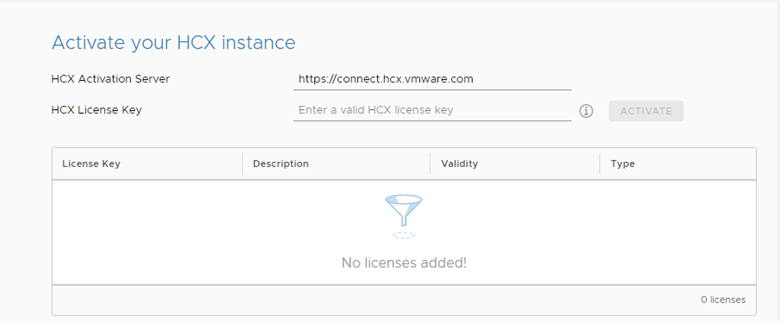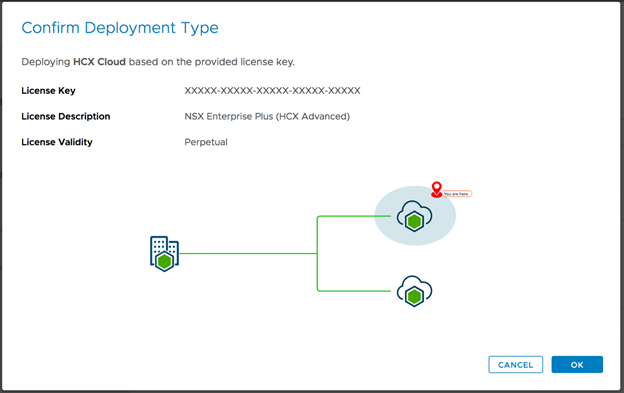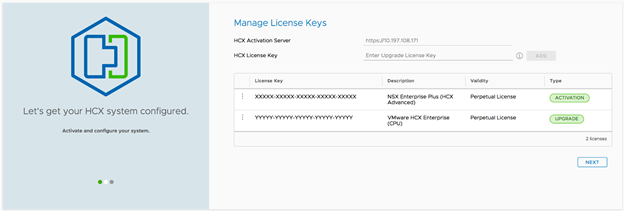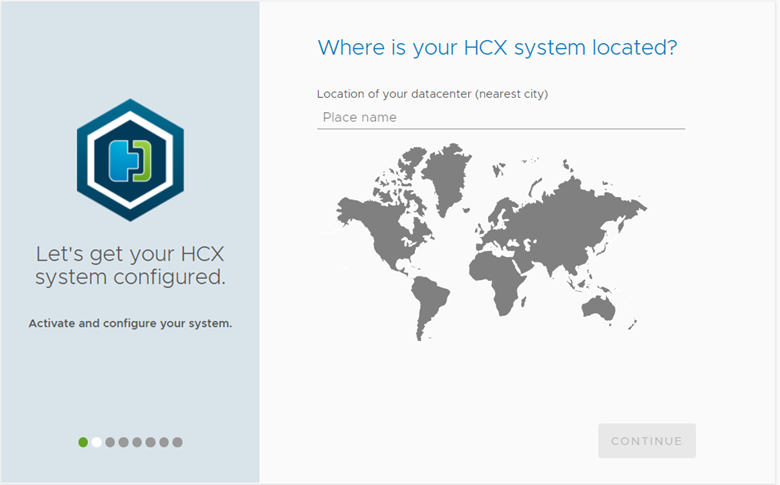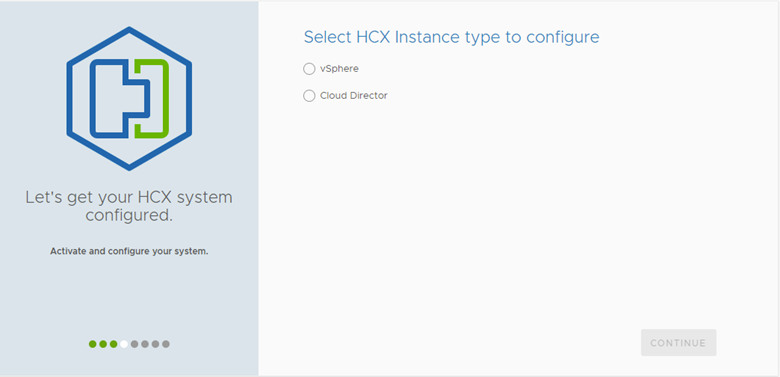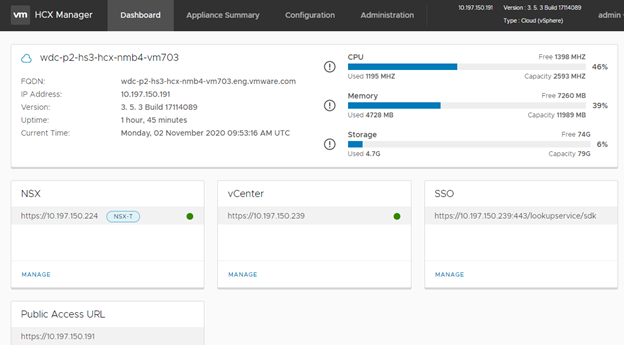After you have deployed the installer OVA file, activate the HCX Cloud Manager and perform the initial configuration immediately when you next open the appliance management interface.
This procedure is for deploying HCX Cloud Manager in private clouds. For public cloud deployments, the HCX Cloud Manager deployment and activation is automated.
Prerequisites
-
The HCX Installer OVA is deployed in the vSphere Client. Allow up to five minutes after the installer OVA deployment for the services to initialize.
-
Configure firewall rules at source and destination sites to allow inbound and outbound connectivity based on the HCX services or features used. See https://ports.vmware.com/home/VMware-HCX.
-
Obtain the activation key. See Activating or Licensing New HCX Systems.
Procedure
Results
The HCX Cloud Manager system configuration is complete.
What to do next
Deploy any additional HCX systems, and then go to "Activating and Configuring HCX Connector."

